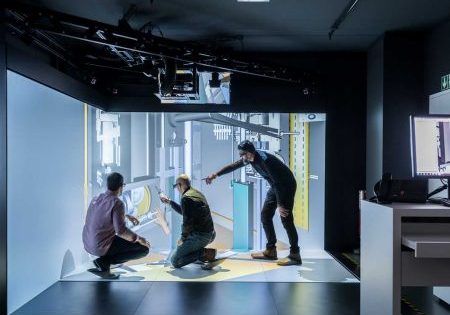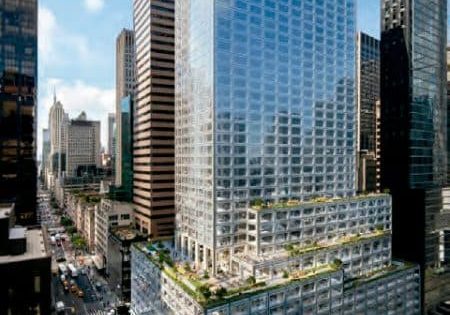Elevator Technology in the Time of the Coronavirus
Jul 1, 2020

Standards-focused Heilbronn Lift Days has hundreds turn out despite early pandemic effect.
Due to the first signs of the coronavirus pandemic, only about 200 of the 300 registered participants attended the 37th Heilbronn Lift Days under the heading “Lift Technology — Modernized — Intelligent — Safe” on March 3-4 in the Harmonie Hall in Heilbronn, Germany. As always, the focus of the event was on standards. In addition, the main technical topics were “Modernization of Elevators and Their Components,” “Digitalization, Especially Artificial Intelligence (AI)” and “Brexit Consequences.”
Dr. Georg Clauss, managing director of host Heilbronn Technical Academy, welcomed visitors by presenting a risk analysis of the conference execution and safety measures for catering and personal behavior.
For the eighth time, the event’s concept and chairmanship were in the proven and skillful hands of Klaus Dietel from TÜV Nord, who also adjusted the program due to coronavirus-related speaker cancellations. He also explained the discussion at the end of the first day, which was conducted for the first time via the internet.
Standardization
A seven-year-long tradition at Heilbronn Lift Days is that the first and, thus, most important speaker on the first day of the conference is Dr. Gerhard Schiffner from thyssenkrupp Elevator on the subject of “European Directives, New European Standards.” He revealed that the revision of the European Union (EU) Machinery Directive (MD) is expected in 2021 but will have no major impact on elevators. The study on “Product Regulation for Lifts” for the EU Ecodesign Directive has been completed (final report). It shows a limited potential for new installations but difficulties in the implementation. The EU decision on how to proceed is expected to take several years. Denmark and Portugal have already included elevators in their national adaptations of the MD.
Two European standards are undergoing fundamental changes, and others are changing substantially, according to Schiffner’s detailed presentation on European standardization (Table 1). He particularly emphasized:
- New Annex ZA for EN 81-20/-22/-50/-72/-73 with a more detailed description of the health and safety requirements from the EU Lift Directive (LD) and MD without technical changes (publication: first or second quarter 2020)
- Limited revision of EN 82-21/-28/-58/-70/-71/-77 for legal reasons (e.g., instructions for actions to be taken by the person in charge/responsible transformed into clear and unmistakable requirements) in which onsite requirements outside of the LD no longer apply (projected publication: 2022)
- “CEN/TS 81-13: Safe access to the lift well for lifts in operation” is in preparation.
- “CEN/TS 81-60 Testing of new lifts before putting them into service — Means of establishing conformity with EN 81-20” is in preparation.
- “CEN/TS 81-76 Evacuation of disabled persons using lifts” is being revised and transferred to the EU standard.
- “EN 81-80 Rules for the improvement of safety of existing passenger and goods lifts” has been published.
EN ISO 8100-1/-2 will replace EN 81-20/-50 from 2022 onward with a long transition period. TC 178 Information Notes 1 and 2 define the structure of the ISO 810x series, which is similar to the EN 81 series “Safety rules for the construction and installation of lifts — Lifts for the transport of persons and goods.” Schiffner presented further International Organization for Standardization (ISO) standards for technical solutions for elevators, components and related calculations, designs, installations, safety requirements and tests.
Thomas Pfaff from TÜV Rheinland Industrie Service was the first and most important speaker on the second day, talking about the “National Rules and Regulations for Lifts — TRBS 1201 Part 4 and Others” from March 2019 and their legal relevance. New in this context is, for example, the term “visual inspection.” (See sidebar.)
Gerhard Quanz from the Kassel District Council showed his personal motivation when speaking on “Brexit and the Elevator Industry,” which is affecting the economy like the coronavirus was. Though the U.K. left the EU on February 1, there is a transitional period for bringing elevators into the market until 2021 This applies to every single product, regardless of whether it is mass produced or custom. When the product was physically manufactured (not when it was delivered) applies. Quanz dealt, step by step, with the influences of Brexit on the production, distribution/sales and marketing of elevators and their components.
Modernization Increases Safety
Christoph Piorek of Huebschmann Aufzuege presented “Modernization of Elevator Installations From the Perspective of Medium-Sized Companies.” Combining many practical tips and illustrative examples, he described, among other things, the procedure for modernization. He emphasized the high demands on personnel for such a task, because there is no general optimal solution, nor is it intended for medium-sized businesses.
Nico Bittel of Schindler spoke about “Modernization of Elevator Systems From the Perspective of Large-Scale Industry.” He cited EN 81-80 and state energy subsidy programs as modernization boosters. He explained that three reasons are motivating customers to modernize: the property must be kept in working order, safety according to current standards must be ensured, and the elevator may be unavailable only for short periods. Solutions range from repair to modernization to complete replacement.
Maik Vondran of DB Station&Service, subsidiary of Deutsche Bahn (Germany’s national railway system), dealt with “The Elevator From the Operator’s Point of View: Requirements, Order Clarification, Interfaces.” Next to real estate companies such as Vonovia, DB is probably the largest elevator operator in Germany, involving flyovers, underpasses and platform access. The service is currently carried out within the railway corporation. These elevators have to be replaced every 20 years due to high wear and tear. Tenders and awards of contracts are made electronically.
Klaus-Peter Kapp, a freelancer in an engineering office for conveying technology in Hamburg, Germany, gave a presentation entitled “Modernization of Elevator Systems — From the Accident to the (New) EN 81-80” for Carsten Henriksen of Schindler Germany, who was not permitted to attend for coronavirus reasons. Approximately 6.16 million units are operated in Europe, i.e., one elevator per 100 residents. In Germany, some 765,000 units have been in service over an average of 30-35 years each; more than 50% of these are more than 25 years old. Aging elevator systems require retrofitting and increased service, which corresponded to a total potential for modernization of EUR280 million (US$303.7 million) in Germany in 2018.
Digitalization, Especially Artificial Intelligence (AI)
Dr. Armin Grunwald from the Institute of Technology Assessment at Karlsruhe Institute of Technology (KIT) introduced the topic, noting that AI is developing in the direction of “weak AI,” i.e., decision-making is automated on the basis of data under uncertainties. The system’s guiding principle in programming and self-learning is: “AI must act safely, securely and responsibly.”
Stephan Hindemith from KONE then presented the KONE 24/7 Connected Service in “Artificial Intelligence on the Elevator — Conclusions From System Data.” He assessed the elevator industry as rather conservative in terms of AI. A look at other industries provides ideas, as he demonstrated with the example of fitness wristbands.
Then, attorney Hartmuth Hardt presented “Data Ownership: The Legally Compliant Data Transmission in Remote Maintenance of Elevator Systems + AI: In the Cautious Eye of the Lawyer.” He defined, among other things, the term of the autonomous system from which the creative performance of
“ePerson” machines is derived, which is in contradiction to the traditional declaration of own intent, which has consequences in the event of damage in terms of liability.
Elevator Technology, Components and More
The exchange of experience is an important component of knowledge transfer during Heilbronn Lift Days. The long breaks and the traditional evening event in the Wine Growers’ Cooperative Heilbronn-Erlenbach serve this purpose. The Bosch Industry Dialogue, which traditionally takes place the evening before Heilbronn Lift Days, also contributes to this. (See sidebar.)
The trade exhibition in the foyer was a further component. It provided details on the modernization and digitalization of elevators for visitors to see and touch, such as hydraulic elevator control valves from Blain Hydraulics, a Heilbronn-based component manufacturer. The Women in the Lift Industry in Europe Communal Coffee also took place, again during the first coffee break on the second day on the outskirts of the exhibition. This time, it only had a very small number of participants due to many already engaged in discussion on the coronavirus crisis throughout the building.
There were, of course, further presentations with up-to-date industry information. Heilbronn Lift Days will return on March 2-3, 2021 — hopefully, in healthier times.
Bosch Industry Dialogue 2020: “Familiar but Aware?”
Traditionally, on the eve of the Heilbronn Lift Days, new Bosch products and services are presented, important topics to the industry are addressed, and experiences are exchanged at the networking dinner. Due to the pandemic, however, fewer than 50 participants were present. The number was significantly fewer than last year.
Bodo Adamus from Bosch Service Solutions welcomed the guests as host and introduced the first main topic, “Visual Inspection.” Annika Stamann, from the same company, provided details of Bosch’s offering in “Visual Inspection — on the Basis of the Company Safety Ordinance,” which is specified in TRBS 3121 as an elevator operator obligation. The onsite functional check includes the correct functioning of the car doors and emergency equipment, mechanical damage (e.g., to the shaft glazing) and the correct operation of the car. The first panel discussion delivered the following statement on the topic: the larger the operator, the more aware he or she is of his or her obligation of visual inspection. But, visual inspection is often one of the many aspects that an operator cannot take care of in full. Suppliers should, therefore, point this out to operators, and, if the operator does not have suitably qualified personnel, they should urge the operator to outsource this task to a third party to be on the safe side.
Alexander Wüllner, member of the management board of Hundt Consult and formerly of KONE, dealt with the topic of “Tenders.” He explained that more suppliers than demanders leads to competition. In a quality competition, the price is fixed; the supplier with the highest quality wins. In price competition, the quality is fixed; the supplier with the lowest price wins. This can lead to customers buying based on transportation capacity, instead of an elevator system and its operation as a whole. Then, the basis moves to optimum operating costs and is no longer on the cheapest elevator or on the system with the lowest operating costs.
Get more of Elevator World. Sign up for our free e-newsletter.







